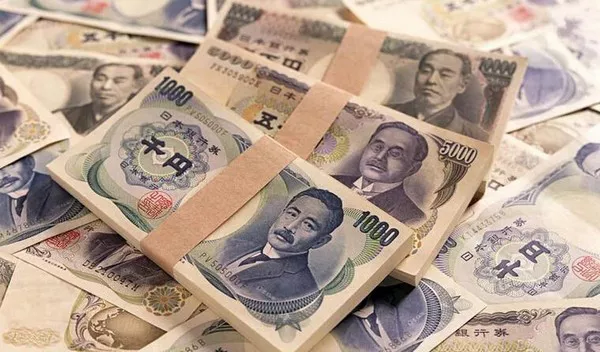The Bank of Japan (BOJ), as the central bank of Japan, plays a pivotal role in shaping the country’s monetary policy and influencing economic conditions through its market operations. This article explores the intricacies of BOJ’s market operations, the tools it employs, and the broader implications for Japan’s economy and global financial markets.
Introduction to the Bank of Japan
Role and Responsibilities
Established in 1882, the Bank of Japan serves as Japan’s central bank, responsible for maintaining price stability, ensuring financial system stability, and supporting sustainable economic growth. It operates independently under the Bank of Japan Act, with its primary mandate being the pursuit of monetary stability.
Objectives of Market Operations
The BOJ conducts market operations primarily to achieve its monetary policy objectives. These operations influence interest rates, money supply, and financial market liquidity, thereby impacting economic activities such as investment, consumption, and inflation.
Tools Used in BOJ Market Operations
Open Market Operations
Open market operations (OMOs) are the primary tool through which the BOJ conducts its monetary policy. These operations involve buying and selling government securities (typically Japanese government bonds, or JGBs) in the open market. By doing so, the BOJ aims to adjust the level of liquidity in the financial system and influence short-term interest rates.
Purchases of Government Bonds
When the BOJ purchases government bonds in the open market, it injects money into the banking system. This increase in liquidity lowers short-term interest rates, making borrowing cheaper and stimulating economic activity.
Sales of Government Bonds
Conversely, when the BOJ sells government bonds, it withdraws money from the banking system, reducing liquidity and raising short-term interest rates. This action is typically used to curb inflationary pressures or stabilize financial markets.
Discount Window Lending
The BOJ also offers discount window lending as a means to provide liquidity to financial institutions facing temporary shortages. Banks can borrow funds from the BOJ against eligible collateral, typically government securities or high-quality corporate bonds.
Asset Purchase Programs
In addition to traditional open market operations, the BOJ has implemented asset purchase programs, often referred to as quantitative easing (QE). These programs involve large-scale purchases of various financial assets, including government bonds, exchange-traded funds (ETFs), and corporate bonds. QE aims to lower long-term interest rates, support asset prices, and stimulate economic growth during periods of economic weakness or deflationary pressures.
Implementation and Execution of BOJ Market Operations
Decision-Making Process
The BOJ’s Policy Board, consisting of nine members including the Governor and Deputy Governors, decides on the implementation of market operations and monetary policy. Policy decisions are made at regular meetings, with considerations given to economic indicators, inflation trends, global economic conditions, and financial market developments.
Communication and Transparency
Transparency is crucial in the BOJ’s communication of its market operations and monetary policy stance. The bank releases meeting minutes, policy statements, and economic assessments to provide clarity on its objectives, decisions, and the rationale behind policy changes.
Impact of BOJ Market Operations
Influence on Interest Rates
One of the primary impacts of BOJ market operations is on interest rates across various maturities. By adjusting the level of liquidity and conducting open market operations, the BOJ influences short-term interest rates, which in turn affect borrowing costs for businesses and consumers.
See Also: What Are the Responsibilities of the Bank of Japan?
Economic Stimulus
During periods of economic downturn or deflationary pressures, the BOJ uses market operations and asset purchase programs to provide monetary stimulus. By lowering interest rates and increasing liquidity, these measures encourage borrowing, investment, and consumption, thereby supporting economic growth and employment.
Financial Market Stability
BOJ market operations also contribute to maintaining stability in financial markets. By ensuring sufficient liquidity and orderly market conditions through open market operations and discount window lending, the central bank helps mitigate liquidity risks and promote confidence among investors and financial institutions.
Challenges and Considerations
Long-Term Sustainability
While BOJ market operations have been effective in addressing immediate economic challenges, prolonged use of unconventional monetary policies such as QE raises concerns about their long-term sustainability. These include potential distortions in financial markets, asset price bubbles, and the effectiveness of monetary policy transmission mechanisms over time.
Inflation Targeting
Achieving and maintaining the BOJ’s inflation target of 2% has been a persistent challenge. Despite extensive market operations and monetary stimulus measures, Japan has faced prolonged periods of low inflation or deflation, prompting ongoing adjustments to monetary policy frameworks and strategies.
Comparative Analysis with Other Central Banks
Contrasts with the Federal Reserve (Fed) and European Central Bank (ECB)
Comparing BOJ market operations with those of other major central banks such as the Federal Reserve and the European Central Bank reveals differences in policy objectives, tools used, and economic contexts. The Fed, for example, focuses on dual mandates of price stability and maximum employment, using a broader range of assets for QE compared to the BOJ.
Global Implications
Given Japan’s position as one of the world’s largest economies, BOJ market operations have significant implications for global financial markets and monetary policy coordination. Changes in BOJ policy can impact global interest rates, exchange rates, and investor sentiment, influencing capital flows and financial stability worldwide.
Conclusion
The Bank of Japan’s market operations are integral to its efforts in achieving monetary stability, supporting economic growth, and ensuring financial system resilience. Through open market operations, asset purchase programs, and discount window lending, the BOJ navigates economic challenges, influences interest rates, and maintains stability in financial markets. As global economic dynamics evolve, understanding the intricacies of BOJ market operations provides insights into Japan’s monetary policy framework and its broader implications for the global economy. Continued scrutiny of these operations and their outcomes remains essential for policymakers, economists, and market participants alike in assessing Japan’s economic trajectory and financial market conditions.
Related Topics:



























